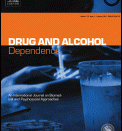Alcohol dependence and depression are commonly diagnosed health problems throughout the world. This literature review will discuss the co-existing problem of depression and alcohol dependence and the importance that evidence based practice and treatment modalities have on the patients' recovery. It will firstly discuss the meaning of dual diagnosis, followed on by the different treatment modalities and their outcomes, the role of a mental health nurse, evidence based practice and lastly recommendations for a treating dual diagnosis patients.
In order to understand some of the terminology used in this literature review some commonly used terms will first be defined. Integrated treatment refers to the treatment of psychiatric and substance misuse or abuse disorders that are provided concurrently by the same clinician. Cognitive-Based Therapy (CBT) is a form of psychotherapy that emphasizes the important role of thinking and how we feel and do things. And most importantly, the term dual diagnosis or co-morbidity refers to the coexistence of a substance abuse disorder such as Alcohol is combined with a psychiatric disorder such as depression (Tabers medical dictionary).
According to Sadock & Sadock (2003) ten percent of women and twenty percent of Australian men will meet diagnostic criteria for alcohol dependence and thirty to forty percent of those with alcohol dependency will also meet the diagnostic criteria for depressive disorder. These alarming rates of co-existing alcohol dependence and depression should encourage nursing staff to be meticulous in their screening, detection and treatment of these problems.
Screening, assessing and intervening with co-existing problems such as alcohol and depression is of core importance in nursing practice (Baker & Velleman 2008). Although at first the use of alcohol may decrease anxiety symptoms, later on it promotes persistent and excessive use (Beitman, Kushner, & Sher, 1990). A possible explanation for the high co-morbidity rates of alcohol...


